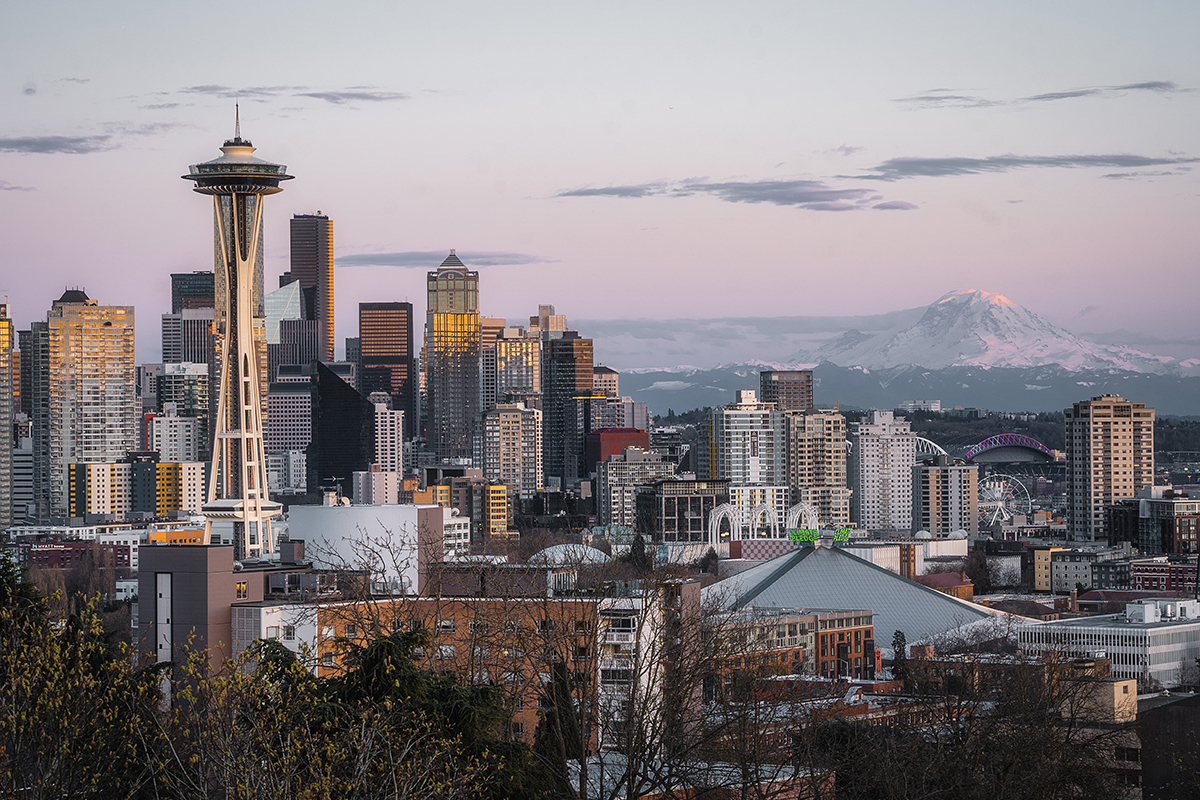Man vs. Mother Nature
Why choose? Cody Conk picks both, photographing landscapes and cityscapes with his Tamron 70-300mm Di III RXD telephoto zoom.
More Photo Tips | Video Gallery | Photo Gallery | Enewsletter sign-up
By Jenn Gidman
Images by Cody Conk
When Cody Conk first started taking pictures a few years back, he originally concentrated on portraits, cityscapes, and street photos in his hometown of Philadelphia. Then, two years ago, he embarked on a cross-country trip with a friend who was moving from Los Angeles to New Jersey, stopping along the way at such iconic sites as Yosemite National Park and Bryce Canyon. “I’d never seen anything like what I saw on that trip,” he says. “That jump-started my love for nature and landscape photography, which is now a big part of my portfolio.”
Cody, who’s currently living in San Jose, California, has found a new best friend in the Tamron 70-300mm Di III RXD telephoto zoom lens, which is always with him on the road. “Because I’m relatively new to photography, I started out shooting on mirrorless cameras from the get-go,” he says. “I have multiple lenses, but I was consistently having to swap them out while I was shooting. As most photographers know, that 15 or 20 seconds when you’re reaching into your bag to change lenses can be crucial. That’s the difference between capturing or missing the perfect lighting or an animal that was doing something interesting. Now, with the 70-300, I have the focal length range I need to feel confident I’m not going to miss important shots.”
Whether he’s shooting landscapes or city scenes (still a big draw for him), Cody tries to suss out a different perspective that shows off the true essence or beauty of what’s in front of his camera. “With landscapes, for example, one of the ways I’ll do that is by showing scale,” he says. “I’ll often find myself surrounded by huge rocks, mountains, or other geological formations, but seen on their own in an image, it’s hard to tell just how huge they really are. That’s why you’ll see in many of my photos a tiny speck that’s a human, to add context to the images so that your brain can register how vast these scenes are.”
Light, shadow, and leading lines also capture Cody’s attention when he’s on the lookout for the perfect photo. “I like to seek out something in nature, or within a city scene, that will pull the viewer’s eyes in the direction I want them to go,” he says. “That could be the lines of a building or bridge, or the direction in which a cliff or the trees are pointing in a landscape. Whether it’s man-made or made by Mother Nature, I like to figure out how to arrange the elements in front of me to create the most compelling photo.”
Read on for the backstory on some of Cody’s recent images taken in California and the Pacific Northwest with the 70-300mm lens.
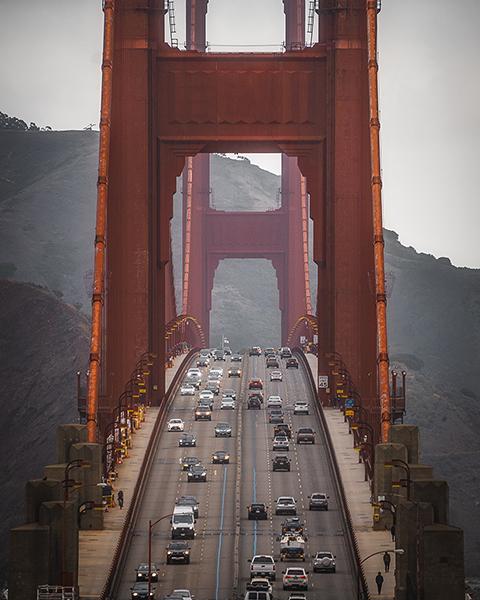
70-300mm (279mm), F/6.3, 1/320th sec., ISO 250
Click image to view larger
The Golden Gate Bridge is one of the most fun bridges to photograph. For this image, I wanted to center and line up the parts of the bridge and just show the busyness of the cars coming and going. I often look for that kind of symmetry in my scenes, whether it’s in nature, cityscapes, or in my street photography. The cars also add an element of scale that I usually achieve using people.
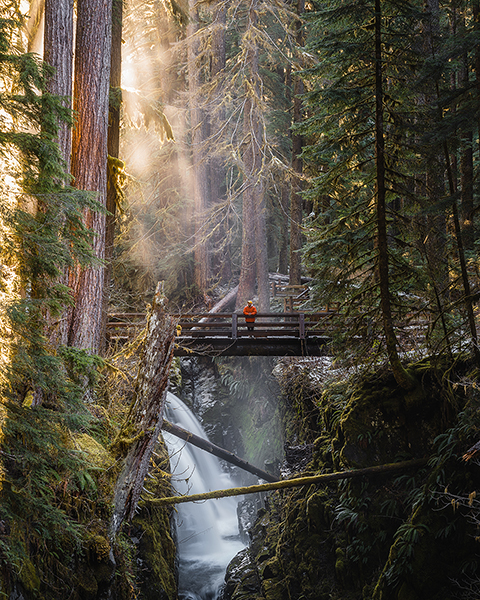
70-300mm (70mm), F/9, 1.0 sec., ISO 50
Click image to view larger
The sunrise on the morning I took this picture near the falls in Olympic National Park was amazing. I wanted to again show a sense of scale, and isolate and define my friend on that bridge, while still capturing the landscape and waterfall, so I shot this photo at 70mm. I wanted to tell the story of one person in the wild, enjoying nature and shutting out the rest of the world. This turned out to be one of my favorite photos from that trip, because of the way the light fell on the trees in that image—they turned pink.

70-300mm (208mm), F/8, 1/160th sec., ISO 400
Click image to view larger
This area near Portland is called Rowena Crest, a popular viewing area that overlooks the Columbia River Gorge and a giant horseshoe-shaped highway—it’s one of the most photographed roads in Oregon. You’re on top of a hill with this huge mountain in front of you, just filled with rolling hills. I took this photo in the evening, when the lighting was soft and golden. I like using a lens like the 70-300 here, with its longer focal lengths, to get that compression you see here while still being able to capture expansive landscapes.
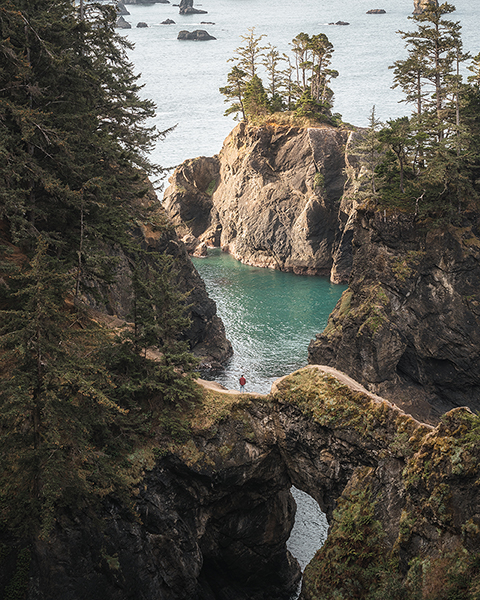
70-300mm (70mm), F/7.1, 1/160th sec., ISO 320
Click image to view larger
Along the Samuel H. Boardman State Scenic Corridor near Brookings, Oregon, are the Natural Bridges, a number of archways carved out by the sea. The photo I took here isn’t a perspective typically seen in this location. We were exploring on the rocks and I was drawn to this view. I wanted to capture the sense of isolation you can feel here, just you and Mother Nature. Once again, I incorporated one of my friends into the image so you could get a sense of just how enormous these rock formations are. I love the compression the 70-300 offers here.
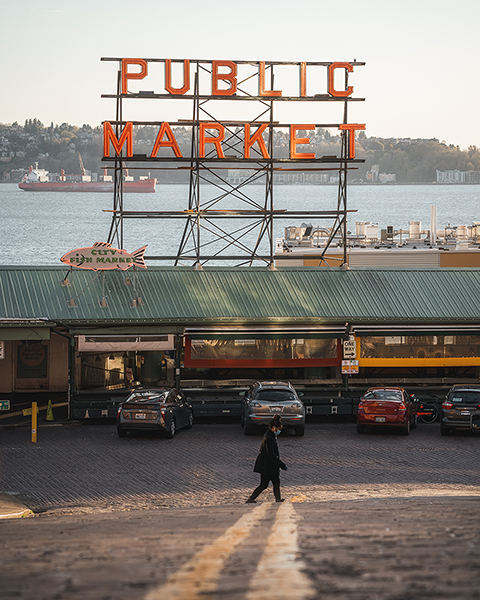
70-300mm (96mm), F/6.3, 1/250th sec., ISO 160
Click image to view larger
The open-air Pike Place Fish Market, part of the larger Pike Place Market, has offered fresh Pacific Northwest seafood for more than 90 years. I really wanted to document this special scene in Seattle. Once again, it’s all about the leading lines for me—in this case, headed right toward that random person walking by as the sun bounces off the market sign and building.
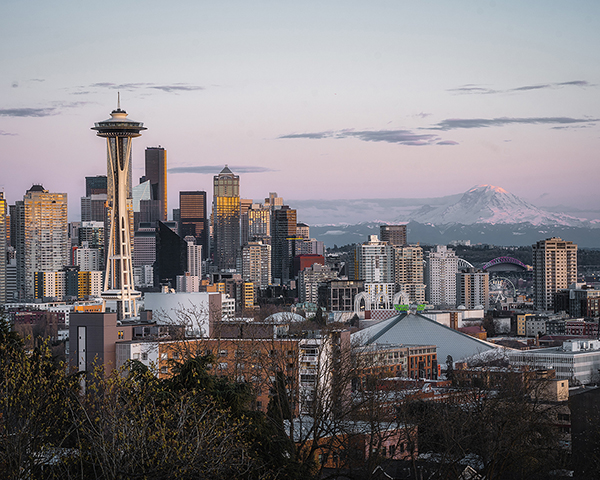
70-300mm (84mm), F/9, 1/30th sec., ISO 160
Click image to view larger
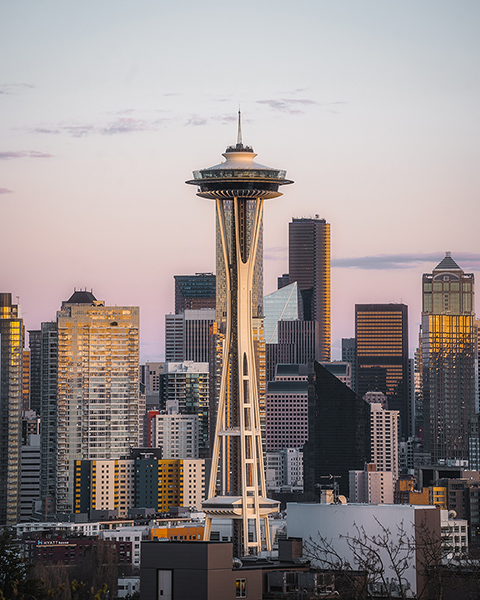
70-300mm (155mm), F/7.1, 1/60th sec., ISO 100
Click image to view larger
The zoom capabilities of the 70-300 came in particularly handy while capturing photos of the Seattle skyline. For the first photo you see here, I wanted to include the city’s Space Needle along with the rest of the city and Mount Rainier in the background, so I shot the first photo at 84mm. Don’t be deceived by that image, though—the mountain is about a three-hour drive from the city, but it’s so gigantic that it looks much closer.
Then, because I wanted to concentrate on more of the Space Needle’s architectural details, I zoomed in to 155mm. The 70-300mm is wonderful in situations like this, where you want to show an iconic landmark in the context of the rest of its surroundings, as well as highlight the details of the landmark itself.
To see more of Cody Conk’s images, go to www.codyconk.com.
More Photo Tips | Watch Videos | Learn More About Tamron Lenses | Photo Gallery
